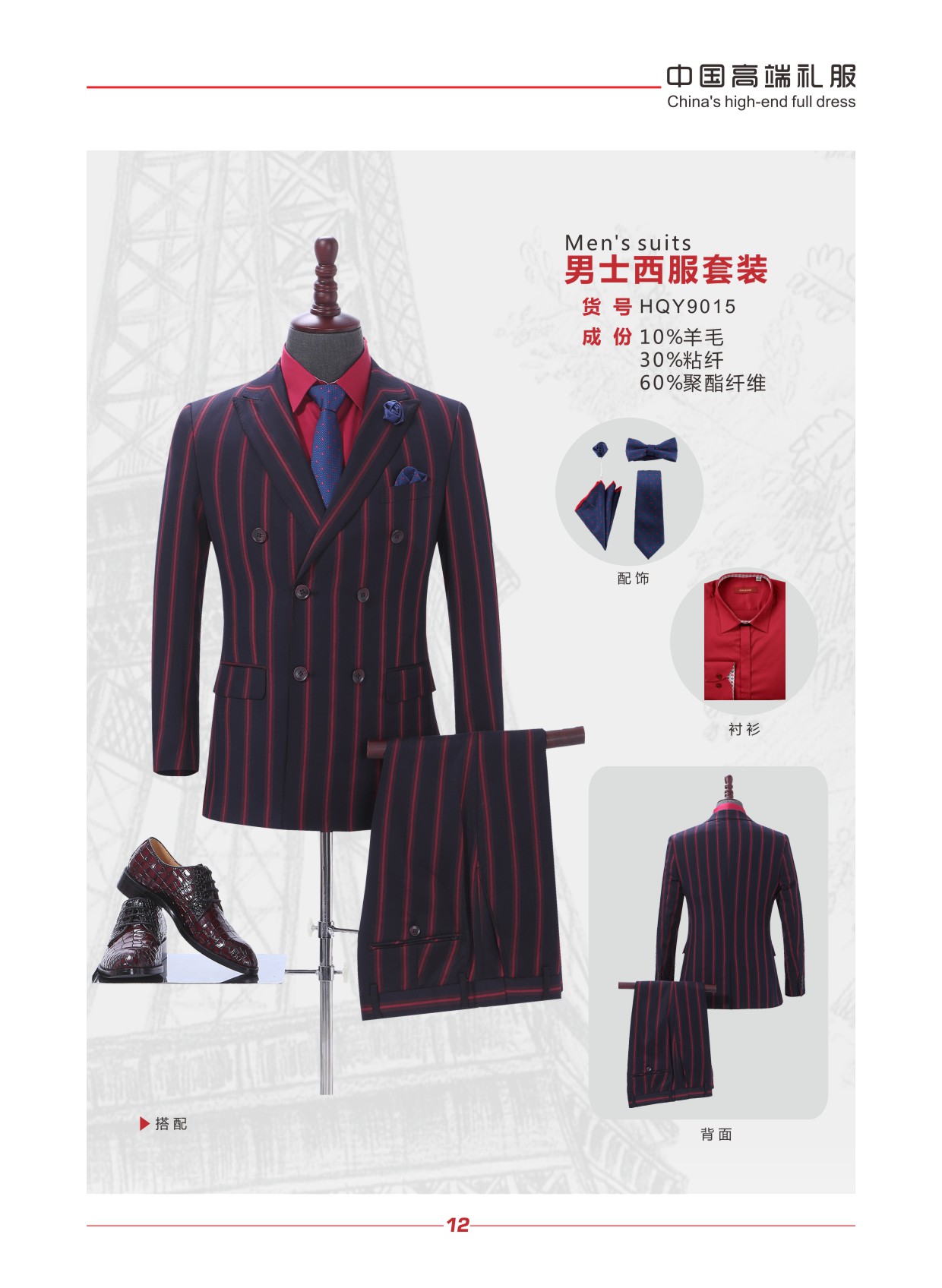联系人: 宁经理 手机:13953116782 电话:15990999232 邮箱:499589624@qq.com 地址:济南市槐荫区清河北路11号(美里新居南门斜对面)亚德森工厂店
济南服装厂浪费大如何去解决?
来源:http://www.ymsfs.com 日期:2025-10-24 发布人:
在服装生产过程中,浪费问题一直是制约工厂效益提升的关键因素之一。许多服装工厂到年末一统计,会发现因各种原因造成的浪费严重,导致成本很高,严重压缩了利润空间,其中仓库管理、裁剪损耗、缝制过程损耗以及生产效率不高是四个为突出的环节。
In the process of clothing production, waste has always been one of the key factors restricting the improvement of factory efficiency. At the end of the year, many clothing factories will find serious waste caused by various reasons, resulting in high costs and severely compressing profit margins. Among them, warehouse management, cutting losses, sewing process losses, and low production efficiency are the four most prominent links.
仓库管理
warehouse management
仓库管理作为服装生产的前端环节,其效率与准确性直接影响到后续生产流程的顺畅与否。然而,许多服装工厂在仓库管理方面存在诸多问题,如库存信息不准确、物料摆放混乱、领料流程繁琐等,导致生产效率低下和物料浪费。由于手工记录或系统更新不及时,仓库中的物料数量、位置和状态等信息往往与实际不符,导致生产时缺料或多余物料的情况发生。仓库内物料摆放没有统一标准,导致寻找与搬运物料时耗费大量时间和人力,同时还可能造成物料损坏或丢失。此外,搬运还会占用大量的通道和存放资源,降低了工厂的生产效率。领料过程需要经过多个审批环节,且往往需要人工核对物料数量和种类,效率低下。由于生产计划不准确、市场需求变化或者供应链中断等原因造成原材料、半成品或成品在库存中进行积压,不仅占用了资金和空间,还可能导致产品过时、变质或损坏,还会掩盖生产过程中的问题,如质量问题、工艺问题等,从而延误了改进的机会。
As a front-end link in clothing production, warehouse management directly affects the efficiency and accuracy of subsequent production processes. However, many clothing factories have many problems in warehouse management, such as inaccurate inventory information, chaotic material placement, and cumbersome material requisition processes, resulting in low production efficiency and material waste. Due to manual recording or delayed system updates, the quantity, location, and status of materials in the warehouse often do not match the actual situation, resulting in shortages or excess materials during production. There is no unified standard for the placement of materials in the warehouse, which results in a lot of time and manpower spent searching and handling materials, and may also cause material damage or loss. In addition, handling also occupies a large amount of channels and storage resources, reducing the production efficiency of the factory. The material requisition process requires multiple approval stages and often requires manual verification of the quantity and type of materials, resulting in low efficiency. Due to inaccurate production plans, changes in market demand, or supply chain disruptions, raw materials, semi-finished products, or finished products accumulate in inventory, which not only occupies funds and space, but may also lead to product obsolescence, deterioration, or damage. It can also mask problems in the production process, such as quality issues, process issues, etc., thereby delaying opportunities for improvement.
对仓库管理系统实现库存信息的实时更新和准确记录,提高库存信息的准确性。制定统一的物料摆放标准,如按照物料类型、规格和批次进行分类摆放,并设置明显的标识牌,方便快速找到所需物料。通过系统自动化处理领料申请和审批流程,减少人工干预,提高领料效率。同时,可以设置物料预警功能,提前通知采购及时补货。及时分清明确有用之物与无用之物,及时清理无用之物,把库存快到期的物品及时处理。
Implement real-time updates and accurate recording of inventory information in the warehouse management system to improve the accuracy of inventory information. Develop unified material placement standards, such as classifying and placing materials according to their types, specifications, and batches, and setting up clear identification signs to facilitate quick and easy access to the required materials. By automating the material requisition and approval process through the system, we can reduce manual intervention and improve material requisition efficiency. At the same time, material warning function can be set up to notify procurement in advance and replenish goods in a timely manner. Timely distinguish between useful and useless items, clean up useless items in a timely manner, and dispose of inventory items that are about to expire in a timely manner.
裁剪管理
Crop management
裁剪是服装生产中的重要环节,但同时也是损耗较大的环节之一。裁剪损耗大、排版图纸利用率不高是导致物料浪费的主要原因之一。传统的裁剪方式往往依赖于人工操作,裁剪精度和效率难以保证,且容易造成物料浪费。排版图纸设计没有充分考虑物料利用率和裁剪效率,导致裁剪过程中产生大量废料。虽然许多工厂已经引入了排料软件,但由于操作不当或软件功能限制,导致面料利用率仍然不高。
Cutting is an important link in clothing production, but it is also one of the links with significant losses. One of the main reasons for material waste is the high cutting loss and low utilization rate of layout drawings. Traditional cutting methods often rely on manual operation, making it difficult to ensure cutting accuracy and efficiency, and prone to material waste. The layout drawing design did not fully consider material utilization and cutting efficiency, resulting in a large amount of waste generated during the cutting process. Although many factories have introduced nesting software, the utilization rate of fabrics is still low due to improper operation or software functional limitations.
通过引入自动化裁剪设备,如激光裁剪机或数控裁剪机,并时常检查和保养,提高裁剪精度和效率,减少物料浪费。利用的排料软件和技术,对图纸进行优化设计,提高物料利用率和裁剪效率。同时,可以根据不同款式和面料的特点,制定针对性的图纸排版设计方案。定期对裁剪工人进行培训和考核,提高他们的裁剪技能和图纸排版设计能力,确保裁剪过程的和准确。对过去排版错误进行总结归纳,不断吸取教训减少排版错误,裁剪之前多检查多仔细核对生产单,测量尺寸数据等。
By introducing automated cutting equipment such as laser cutting machines or CNC cutting machines, and regularly inspecting and maintaining them, cutting accuracy and efficiency can be improved, and material waste can be reduced. By utilizing advanced nesting software and technology, optimize the design of drawings to improve material utilization and cutting efficiency. At the same time, targeted layout design schemes can be developed based on the characteristics of different styles and fabrics. Regularly train and assess cutting workers to improve their cutting skills and drawing layout design abilities, ensuring the efficiency and accuracy of the cutting process. Summarize and generalize past typesetting errors, continuously learn from lessons and reduce typesetting errors. Before cutting, check and carefully verify production orders, measure dimensional data, etc.
缝制管理
Sewing management
缝制过程是服装生产中的核心环节,但由于操作不当、设备故障或面料质量问题等原因,往往导致缝制过程中产生大量损耗浪费。缝制员工对设备操作不熟练或没有按照工艺要求进行操作,导致裁片损坏或返工。缝制设备由于长期使用或维护不当,出现故障或精度下降,影响缝制质量和效率。面料本身存在瑕疵或质量问题,如缩水、褪色、抽纱、起球等,导致成品质量不达标。
The sewing process is the core link in clothing production, but due to improper operation, equipment failure, or fabric quality issues, a large amount of loss and waste often occur during the sewing process. Sewing workers are not proficient in operating the equipment or do not follow the process requirements, resulting in damage or rework of the cut pieces. Due to long-term use or improper maintenance, sewing equipment may malfunction or decrease in accuracy, affecting sewing quality and efficiency. The fabric itself has defects or quality issues, such as shrinkage, fading, yarn drawing, pilling, etc., which result in substandard finished product quality.
定期对缝制员工进行设备操作和工艺要求的培训,提高他们的操作技能和质量意识。同时,可以设立质量奖励制度,激励员工提高缝制质量。建立设备定期维护和检修制度,确保设备的正常运行和精度。同时,可以引入的缝制设备和技术,提高缝制效率和质量。在采购面料时,严格把控面料质量,选择信誉好、质量稳定的供应商。同时,对面料进行严格的检验和测试,确保面料符合生产要求。
Regularly train sewing employees on equipment operation and process requirements to improve their operational skills and quality awareness. At the same time, a quality reward system can be established to motivate employees to improve sewing quality. Establish a regular maintenance and overhaul system for equipment to ensure its normal operation and accuracy. At the same time, advanced sewing equipment and technology can be introduced to improve sewing efficiency and quality. When purchasing fabrics, strictly control the quality of the fabrics and choose suppliers with good reputation and stable quality. At the same time, strict inspection and testing are carried out on the fabric to ensure that it meets production requirements.
四、生产效率管理
4、 Production efficiency management
生产效率不高是导致服装厂浪费严重的另一个重要原因。生产效率低下可能是由于生产计划不合理、生产流程安排不合理、工艺流程繁琐或员工积极性不高等原因造成的。生产计划没有充分考虑市场需求、物料供应和生产能力等因素,导致生产进度与市场需求脱节。工艺流程过于复杂或存在不必要的环节,导致生产周期延长和效率下降。员工对工作环境、薪酬待遇或职业发展前景不满意,导致工作积极性不高,影响生产效率。
Low production efficiency is another important reason for serious waste in clothing factories. Low production efficiency may be caused by unreasonable production planning, unreasonable production process arrangement, cumbersome process flow, or low employee motivation. The production plan did not fully consider factors such as market demand, material supply, and production capacity, resulting in a disconnect between production progress and market demand. The process flow is too complex or there are unnecessary links, resulting in extended production cycles and decreased efficiency. Employees are dissatisfied with the work environment, salary, or career development prospects, which leads to low work enthusiasm and affects production efficiency.
要根据市场需求、物料供应和生产能力等因素,制定合理的生产计划,合理安排人员进行生产。同时,建立生产进度跟踪和反馈机制,及时调整生产计划以应对市场变化。对现有的工艺流程进行分析和优化,不必要的环节和浪费。同时,引入的生产技术和设备,提高生产效率和质量。改善工作环境、提高薪酬待遇和职业发展前景等方面的条件,激发员工的工作积极性和创造力。同时,可以设立激励机制和奖励制度,鼓励员工提高工作效率和质量,激发生产与改善的积极性。
We need to develop a reasonable production plan and arrange personnel for production based on factors such as market demand, material supply, and production capacity. At the same time, establish a production progress tracking and feedback mechanism, and adjust production plans in a timely manner to respond to market changes. Analyze and optimize the existing process flow to eliminate unnecessary steps and waste. At the same time, advanced production technology and equipment are introduced to improve production efficiency and quality. Improve working environment, increase salary and career development prospects, and stimulate employees' work enthusiasm and creativity. At the same time, incentive mechanisms and reward systems can be established to encourage employees to improve work efficiency and quality, and stimulate their enthusiasm for production and improvement.
为了有效减少浪费并提高整体效益,服装厂需要从浪费入手,引入的技术和管理手段进行优化和改进,无论是动作的浪费、等待与搬运的浪费,失误的管理浪费等,都要不断减少成本的浪费。
In order to effectively reduce waste and improve overall efficiency, clothing factories need to start with waste, introduce advanced technology and management methods for optimization and improvement, and continuously reduce cost waste, whether it is waste from actions, waiting and handling, or management errors.
通过加强员工培训、引入自动化设备和系统、优化工艺流程和提高员工积极性等措施的实施,服装厂可以逐步降低浪费水平并提高生产效率和质量竞争力,从而加强市场竞争力,增强企业实力。在未来的发展中,服装厂还需要持续关注市场需求和技术创新动态,不断调整和优化自身的生产模式和管理方式以适应市场的变化和挑战。愿企业生产浪费都大大减少,不断学习与改进生产方式,不断做出高质量产品。
By implementing measures such as strengthening employee training, introducing automated equipment and systems, optimizing process flow, and increasing employee motivation, clothing factories can gradually reduce waste levels and improve production efficiency and quality competitiveness, thereby enhancing market competitiveness and strengthening enterprise strength. In the future development, clothing factories need to continue to pay attention to market demand and technological innovation trends, constantly adjust and optimize their production modes and management methods to adapt to market changes and challenges. May the enterprise significantly reduce production waste, continuously learn and improve production methods, and continuously produce high-quality products.
本文由 济南服装厂 友情奉献.更多有关的知识请点击 http://www.ymsfs.com/ 真诚的态度.为您提供为的服务.更多有关的知识我们将会陆续向大家奉献.敬请期待.
This article is a friendly contribution from Jinan Clothing Factory For more related knowledge, please click http://www.ymsfs.com/ Sincere attitude To provide you with comprehensive services We will gradually contribute more relevant knowledge to everyone Coming soon.
资讯MORE+
- 济南服装厂浪费大如何去解决? 2025-10-24
- 济南工装定做的意义有哪些?为什么企业要定制工作服? 2025-10-23
- 济南服装厂现场管理 8大浪费及10大管理法则 2025-10-22
- 济南工作服的穿戴要求因行业、场景及功能需求不同而有所差异 2025-10-20
- 济南工作服定制避坑指南:6个关键细节,少花枉钱还省心。 2025-10-07
- 济南职业装定制必须了解的几个技巧 2025-10-06
- 济南定制西装制服职业装,不可不知的注意事项 2025-09-19
- 济南工装定做:工装定做的流程 2025-09-18
- 济南工作服:工作服的设计不仅仅是舒服这么简单! 2025-09-17
- 济南工装定做:穿的整齐,人心才能齐! 2025-09-16
- 济南职业装:职业装搭配好了也能穿出时髦范儿 2025-09-13
- 济南工作服:保安工作服管理办法 2025-09-08
- 济南工作服:企业定制员工工作服需要关注的四大 2025-08-30
- 济南工作服定做:选对工装工作效率翻倍 2025-08-24
- 济南工作服定制:定制衬衫工作服验收不再难 2025-08-23
- 工作服不合规?污染难控制?济南工作服厂家亚美森为您解决 2025-08-09
- 济南各行业工作服重量解析 2025-07-30
- 济南服装厂常用机械解析 2025-07-28
- 济南工作服设计:行业风格的差异化体现 2025-07-25
- 济南工作服开口大小设计方法:兼顾实用与地域适配性 2025-07-24




